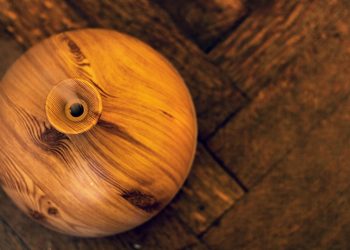Chronic pain can feel like an unwelcome guest that refuses to leave. It’s exhausting, frustrating, and can make you feel isolated. But, you’re not alone. Millions are searching for effective solutions to manage their pain. If you’re navigating the maze of discomfort, holistic remedies for chronic pain relief could be your guiding light. These remedies focus on the whole person, addressing not just the symptoms but also the root causes.
Contents
Understanding Chronic Pain
Chronic pain is defined as pain that lasts longer than three months. It can stem from various conditions, including arthritis, fibromyalgia, and nerve damage. Unlike acute pain, which serves as a warning signal, chronic pain is often a complex interplay of physical, emotional, and psychological factors.
Why does this matter to you? Because understanding chronic pain is the first step toward reclaiming your life. It’s not just about managing the pain; it’s about nurturing your body and spirit. Embracing holistic remedies can lead to significant improvements, allowing you to live a fuller, richer life.
The Power of Holistic Remedies
Holistic remedies consider your entire being—body, mind, and spirit. They can be powerful allies in your journey toward pain relief. Here are seven holistic remedies for chronic pain relief you need to try.
1. Mindfulness Meditation
Mindfulness meditation is more than just a buzzword; it’s a transformative practice. Research shows it can significantly reduce the perception of pain. By focusing on the present moment, you can cultivate a sense of calm that helps you manage discomfort.
-
How to Start: Find a quiet space, close your eyes, and focus on your breath. When your mind wanders, gently bring it back to your breathing. Start with just five minutes a day and gradually increase the time.
-
Benefits: Reduces stress, enhances emotional resilience, and improves pain tolerance.
For more on mindfulness, visit Mayo Clinic’s guide on meditation.
2. Acupuncture
Acupuncture is an ancient Chinese practice that involves inserting thin needles into specific points on the body. This technique can stimulate the release of endorphins, your body’s natural painkillers.
-
What to Expect: A qualified acupuncturist will assess your condition and create a personalized treatment plan. Many people report immediate relief after just one session.
-
Benefits: Reduces chronic pain, improves sleep quality, and enhances overall well-being.
Research has shown that acupuncture can be particularly effective for conditions like lower back pain and migraines. Learn more at the National Center for Complementary and Integrative Health.
3. Herbal Remedies
Certain herbs have been used for centuries to combat pain and inflammation. Incorporating these into your routine may offer you relief.
-
Turmeric: Contains curcumin, known for its anti-inflammatory properties. Add it to your meals or take it as a supplement.
-
Ginger: A natural anti-inflammatory that can help with muscle pain and soreness. Brew it in tea or add it to your dishes.
-
Willow Bark: Often referred to as “nature’s aspirin,” it can help alleviate headaches and back pain.
Always consult a healthcare provider before starting any herbal remedies to ensure they’re right for you.
4. Yoga and Stretching
Yoga is a powerful way to connect your body and mind. It enhances flexibility, strengthens muscles, and can provide significant relief from chronic pain.
-
Start Slow: Look for beginner classes or online tutorials focusing on gentle movements.
-
Focus on Breath: Incorporating breathwork into your practice can deepen relaxation and reduce pain perception.
-
Benefits: Improves physical function, reduces stress, and fosters a sense of community.
For more information on yoga for pain relief, check out the American Osteopathic Association.
5. Essential Oils
Essential oils have gained popularity for their therapeutic properties, and for good reason. Oils like lavender, peppermint, and eucalyptus can help soothe pain and inflammation.
-
How to Use: You can diffuse them in your home, mix them with a carrier oil for massage, or add a few drops to your bath.
-
Benefits: Promotes relaxation, reduces inflammation, and enhances mood.
Be sure to choose high-quality, therapeutic-grade oils for the best results.
6. Nutrition and Diet
Your diet plays a crucial role in managing chronic pain. Certain foods can exacerbate inflammation, while others can help alleviate it.
-
Anti-Inflammatory Foods: Incorporate berries, leafy greens, nuts, and fatty fish rich in Omega-3 fatty acids.
-
Avoid Processed Foods: Limit sugar, refined carbs, and trans fats, which can trigger inflammation.
-
Stay Hydrated: Drinking plenty of water is essential for overall health and can help reduce pain levels.
Consider consulting a nutritionist to create a personalized plan that supports your body’s unique needs.
7. Physical Therapy
Physical therapy isn’t just for recovery; it’s a proactive way to manage chronic pain. A physical therapist can help you develop a tailored exercise program that focuses on strengthening and stretching.
-
What to Expect: Your therapist will assess your condition and design a program that suits your needs.
-
Benefits: Improves mobility, strengthens muscles, and teaches pain management techniques.
For more resources on finding a physical therapist, visit the American Physical Therapy Association.
Bottom Line
Chronic pain can be overwhelming, but you don’t have to face it alone. Exploring holistic remedies for chronic pain relief can open new doors to healing and wellness. From mindfulness meditation to essential oils, these remedies offer a comprehensive approach to managing pain—addressing not just the symptoms but the whole you.
Take the first step today. Experiment with one or more of these remedies and see what works for you. Remember, healing is a journey, not a race.
FAQs
Q: How long does it take to see results from holistic remedies?
A: Results can vary based on the remedy and individual circumstances. Some may experience relief quickly, while others may need consistent practice over weeks or months.
Q: Are holistic remedies safe?
A: Generally, holistic remedies are safe, but it’s essential to consult with a healthcare professional before starting any new treatment, especially if you have existing conditions or are on medication.
Q: Can I combine holistic remedies with traditional treatments?
A: Yes! Many people find that combining holistic approaches with traditional medical treatments can lead to better overall results.
Embrace the journey to wellness and discover the power of holistic remedies today!
Get Your FREE Natural Health Guide!
Subscribe now and receive our exclusive ebook packed with natural health tips, practical wellness advice, and easy lifestyle changes — delivered straight to your inbox.















